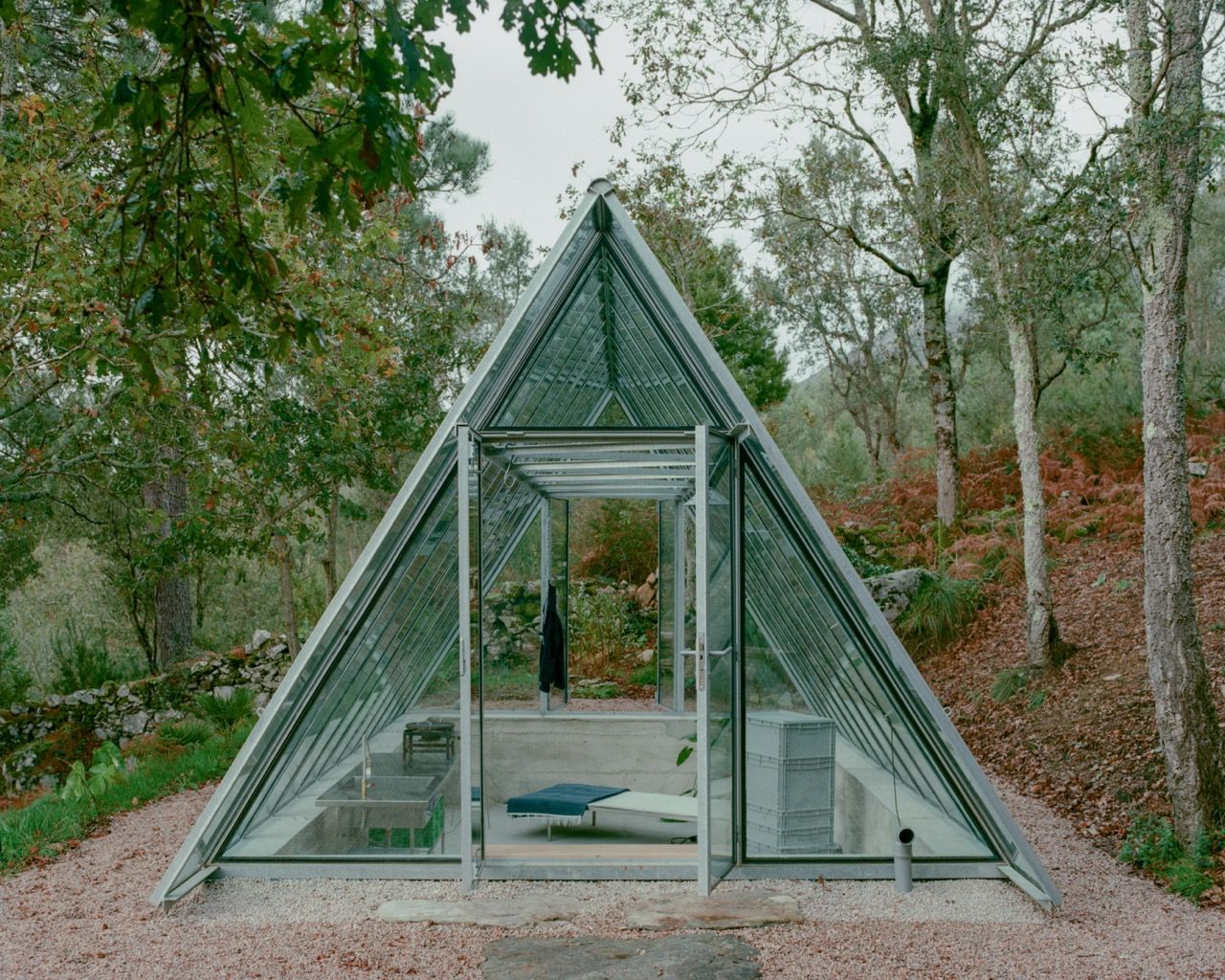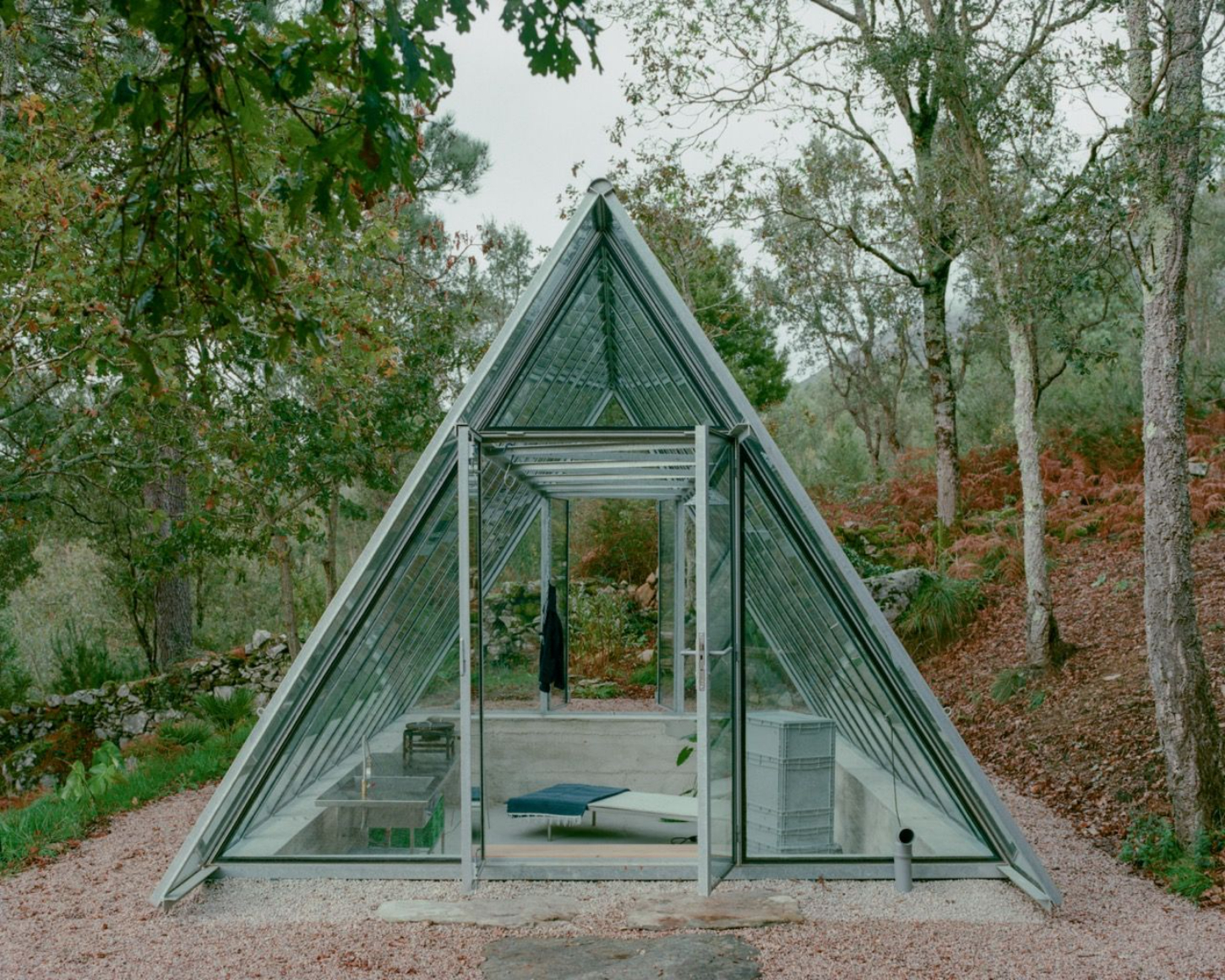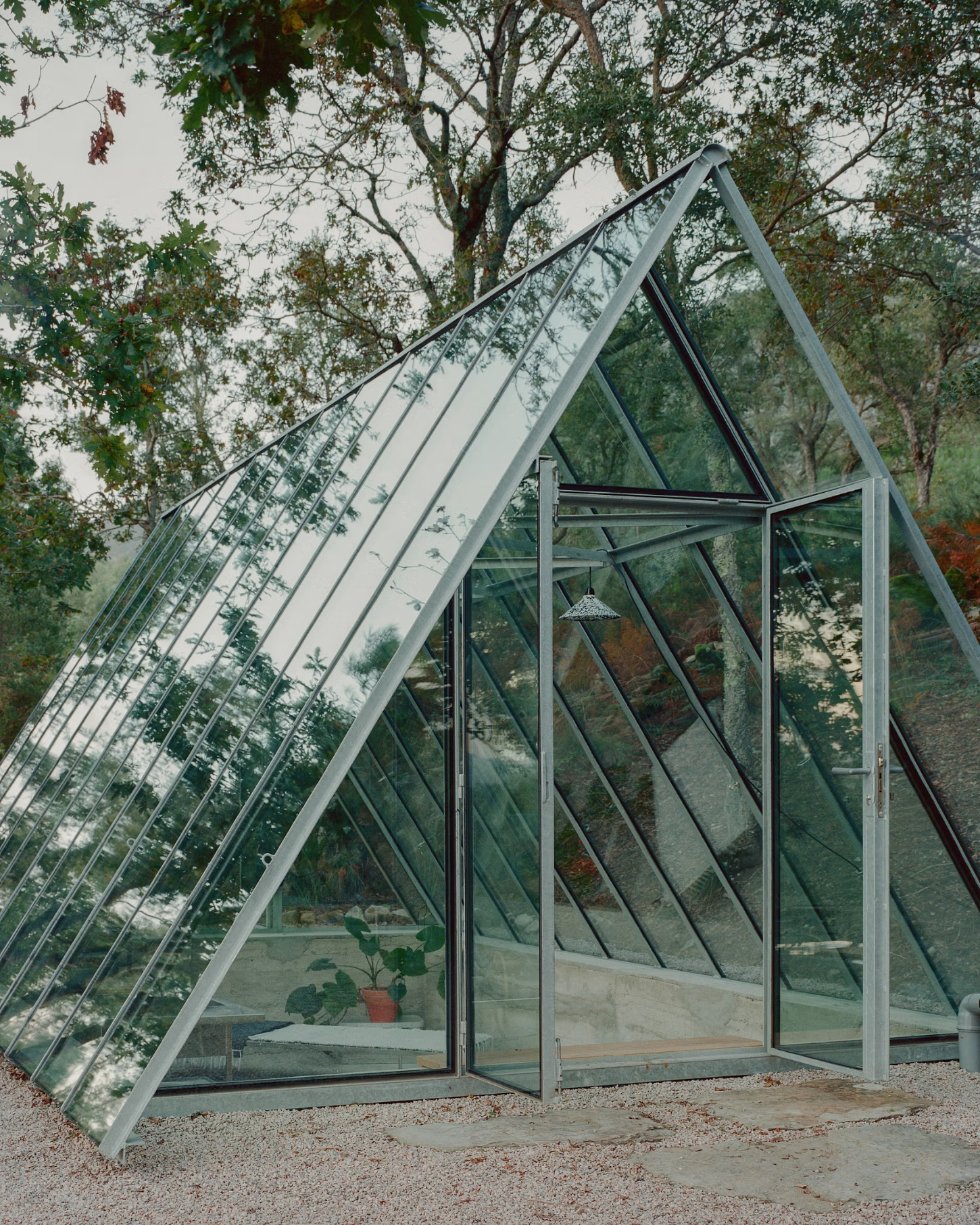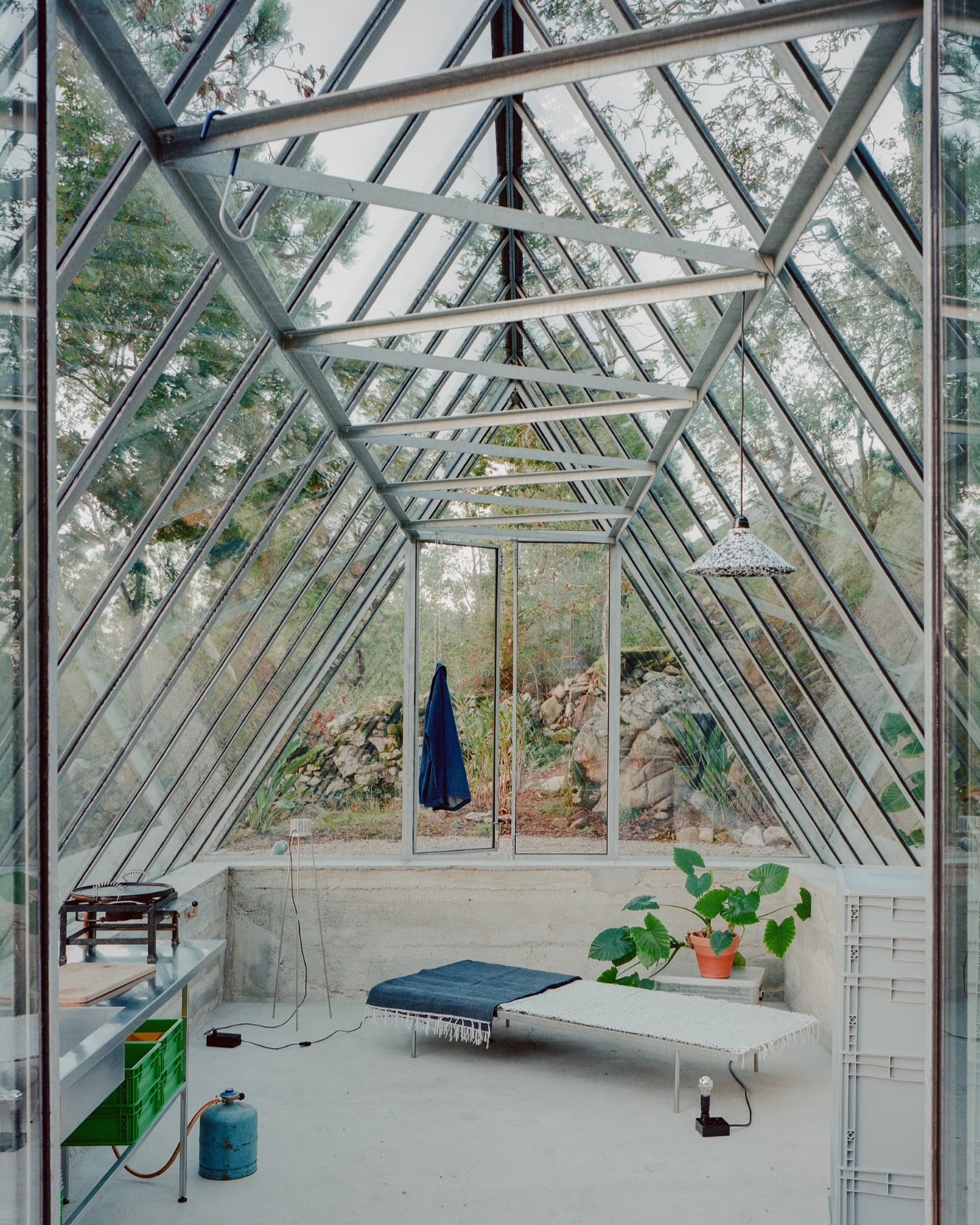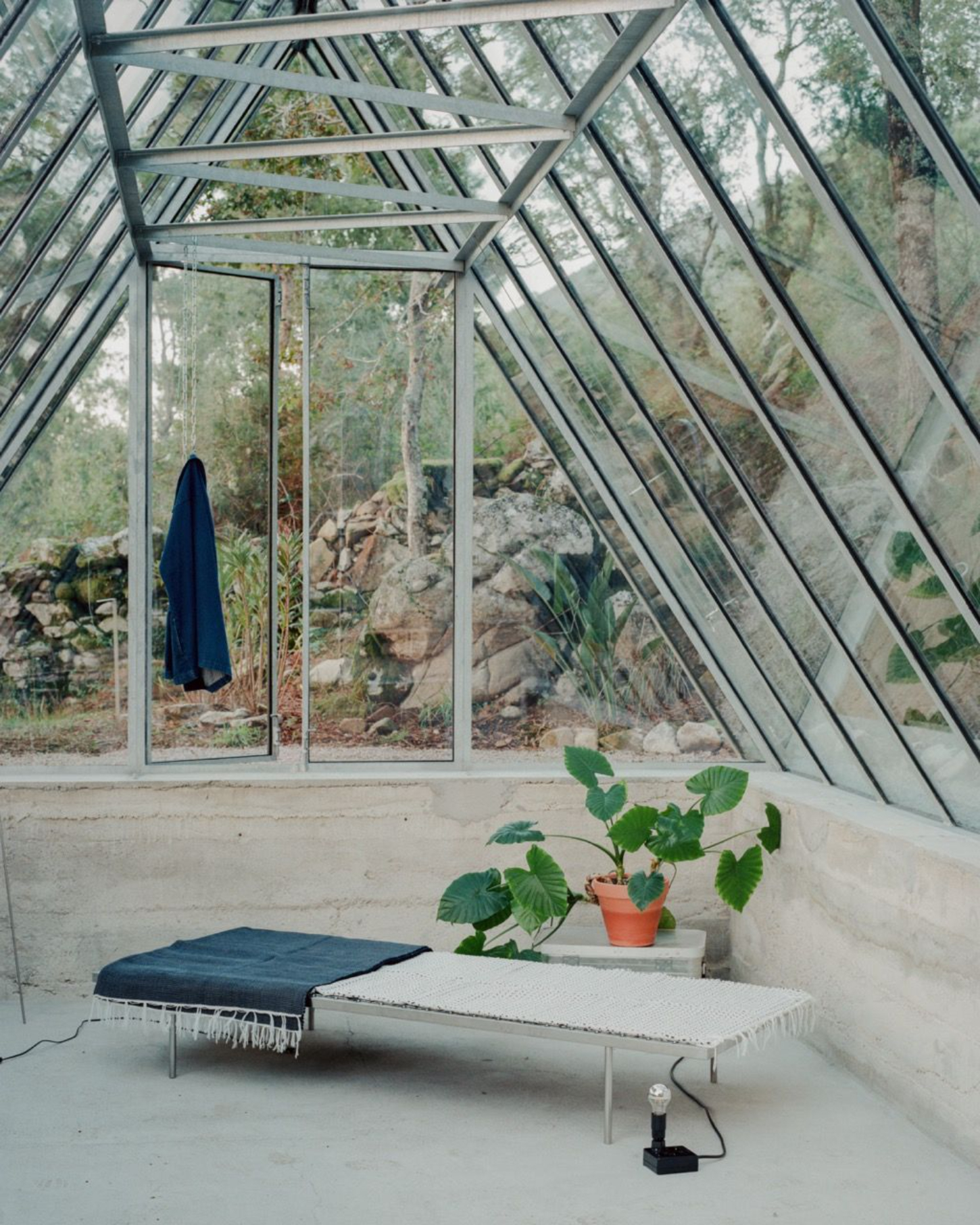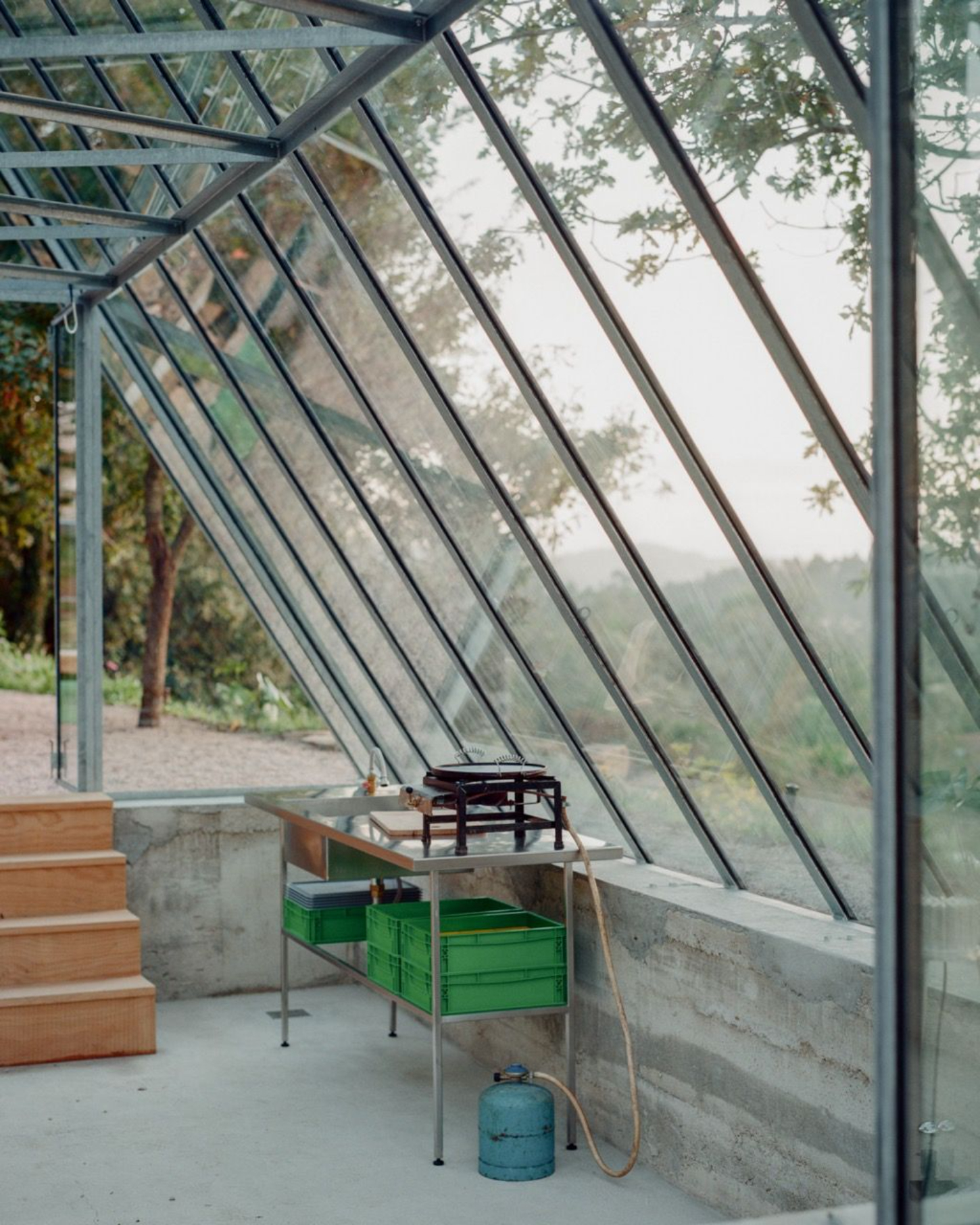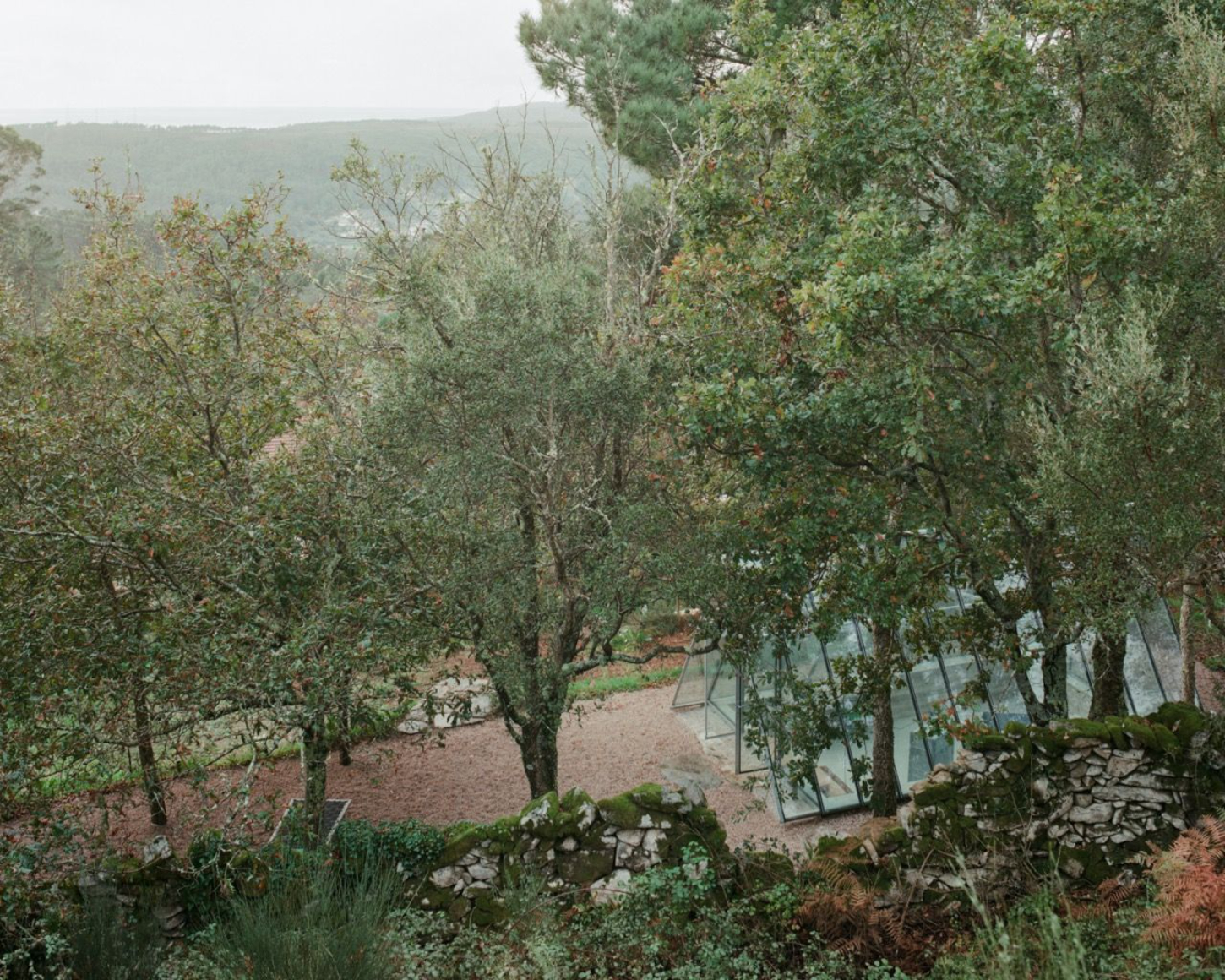In the north of Portugal, near the Atlantic coast, a ruin built of granite stone finds new life through a quiet act of reconstruction by Dyvik Kahlen Architects.
The project brings together the permanence of stone and the transparency of glass, creating a subtle dialogue between solidity and fragility, warmth and exposure. What was once a farmhouse becomes a study in balance — between architecture and landscape, shelter and openness, decay and renewal.
Three of the building’s original rooms are restored as enclosed, warm spaces, preserving the intimacy of interior life. The remaining four are left open to the elements, becoming outdoor rooms where walls frame the sky and vegetation begins to reclaim the floor. These spaces blur the threshold between inside and outside, inviting improvisation and allowing the landscape to flow through the architecture.
The site’s climate — humid air and mild temperatures shaped by proximity to the ocean — informs every decision. The granite walls, assembled as dry stone construction and resting directly on the earth, remain honest to their material logic. Rather than introducing the usual layers of insulation, cavities and membranes, the reconstruction embraces the simplicity of the monolith. Copper pipes, embedded in the exterior walls, circulate warmth during the colder months. This active insulation gently heats the stone, preventing moisture from seeping through and maintaining a stable indoor climate through radiant energy.
The result is a building that breathes with its environment, one that accepts time and weather as collaborators rather than obstacles. The granite absorbs and releases heat, the glass house reflects and refracts light, and the spaces in between invite moments of stillness and adaptation. It is less a restoration than a conversation — between architecture and nature, between the weight of the past and the quiet possibilities of the present.

